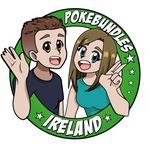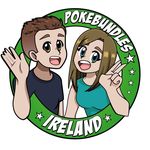Can Pokémon Cards Be Fake? How to Spot a Fake Pokémon Card in 2025
Can Pokémon Cards Be Fake? How to Spot a Fake Pokémon Card in 2025
Unfortunately, yes—Pokémon cards can absolutely be fake, and counterfeit cards are still a major issue in 2025. With the rising value of rare cards and sealed products, scammers are more motivated than ever to create fakes that fool casual buyers, especially online.
Whether you’re a collector, parent, or reseller in Ireland, knowing how to identify fake Pokémon cards is essential. This guide will help you spot counterfeit cards quickly and safely.
1. Check the Card Back
The back of a real Pokémon card is dark blue with a clean Poké Ball image in the centre. Watch for:
-
Washed-out or overly saturated colours
-
Blurry Poké Ball or fuzzy print
-
Different font weight or spacing
Compare it to a known genuine card if you’re unsure.
2. Inspect the Print Quality
Genuine cards have very high-resolution print and fine detail. Fakes often have:
-
Grainy or pixelated text
-
Colour bleeding
-
Low-quality foil or overly shiny holo areas
Real cards from modern sets also use specific texture patterns. If it looks or feels off, it probably is.
3. Test the Card Stock
Real Pokémon cards have a specific weight and feel. They should be:
-
Smooth but firm
-
Slightly flexible, not flimsy
-
Not too thick or too thin
You can also try the light test: Hold the card up to a light. Real cards are not transparent. If you can see through it, it’s likely fake.
4. Look for Set and Rarity Symbols
Fake cards often have:
-
Missing or incorrect set symbols
-
Wrong rarity icons (e.g. star on a common card)
-
Nonexistent card numbers or strange fonts
Check official Pokémon websites or trusted sellers to match the artwork and layout.
5. Beware of Unrealistic Stats or Attacks
Fakes sometimes have absurd attacks like “2000 damage” or made-up energy types. If the card seems overpowered or the text is poorly translated, it’s a red flag.
6. Check the Source
Where you buy matters. Avoid buying loose cards from:
-
Toy shops that don’t specialise in Pokémon
-
Online marketplaces with poor ratings
-
Social media ads selling bulk packs too cheaply
Instead, buy from trusted Irish sellers, pop-up shops, or official retailers.
7. Japanese and Foreign Cards
Be especially careful when buying Japanese or Korean cards. They are often used as templates for counterfeits. Make sure you know what the authentic version should look like.
8. Use UV Light or Rip Test (With Caution)
Serious collectors sometimes use a UV light to check for hidden layers or even rip the card to see the black ink core. These methods should only be used if you don’t mind damaging the card to test it.
9. Get a Second Opinion
If in doubt, ask an expert. Bring your cards to a local event or message a trusted Irish seller like Pokebundles Ireland. Experienced sellers can often spot fakes instantly and offer advice.
Final Tip: Protect Your Collection
To avoid fakes:
-
Buy sealed products from reputable sources
-
Keep high-value cards in sleeves or slabs
-
Teach your kids how to spot fake cards early
-
Want to buy cards that are 100% real? Visit www.pokebundles.ie

